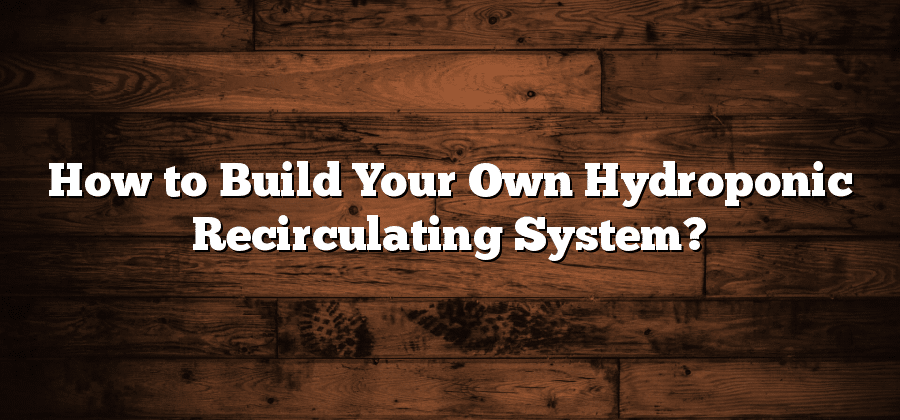Understanding the Benefits of Hydroponic Systems
Hydroponic systems have gained significant popularity in recent years, and for good reason. One of the most notable benefits of hydroponics is its ability to maximize yields while minimizing resource usage. Unlike traditional soil-based farming, hydroponic systems allow plants to grow in a nutrient-rich water solution, resulting in faster growth rates and significantly higher crop yields. This efficiency makes hydroponic systems a sustainable option for food production, particularly in urban areas where land may be scarce.
Another advantage of hydroponic systems is their flexibility in terms of location. Since these systems do not rely on soil, they can be set up just about anywhere – from greenhouses to warehouses or even in your own backyard. This versatility allows for year-round cultivation, eliminating the dependence on seasonal fluctuations and climate constraints. Moreover, the controlled environment of hydroponics minimizes the risk of pests and diseases, reducing the need for pesticides and other harmful chemicals. With hydroponics, farmers have greater control over the growth factors, resulting in healthier and more nutritious crops.
Choosing the Right Components for Your System
Once you have decided to set up a hydroponic system, selecting the right components becomes crucial for its success. Your choice of components will determine how effectively your plants receive nutrients and water, as well as the overall efficiency and productivity of your system.
First and foremost, you will need to choose a suitable reservoir to hold the water and nutrient solution. The reservoir should be large enough to accommodate the size of your system and plants, and made of a durable material that can withstand constant contact with water. Additionally, consider whether you want a pre-built reservoir or if you’d prefer to construct your own using materials such as plastic containers or troughs. Once you have the reservoir sorted, you will need to select a pump to circulate the nutrient solution to your plants. The pump should be energy-efficient and have the capacity to provide adequate circulation for your system’s size. Look for a pump that is specifically designed for hydroponics, as these will often come with features such as adjustable flow rates and quiet operation. Finally, you will need tubing and fittings to connect your pump to the various components of your system, ensuring a smooth and leak-free flow of nutrient solution.
Designing and Sizing Your Hydroponic Setup
Once you have decided to venture into hydroponic gardening, designing and sizing your hydroponic setup is a critical step. Proper planning and consideration of various factors can help ensure the success of your hydroponic system. Firstly, you need to determine the size and layout of your setup based on the available space and the number of plants you wish to grow. This will help you determine the quantity and type of components and equipment you will need.
When designing your hydroponic setup, it is important to consider the specific requirements of the plants you plan to grow. Different plants have different needs in terms of lighting, temperature, humidity, and nutrients. By understanding these requirements, you can choose the appropriate components for your system, such as grow lights, ventilation systems, and nutrient solutions. Additionally, considering the long-term goals for your hydroponic garden will also guide your design choices. Whether you plan to scale up your setup in the future or start small, designing with future expansion in mind can save you time and effort down the road. With careful planning and designing, your hydroponic setup can provide an optimal growing environment for your plants, resulting in healthy and vibrant yields.
Setting Up the Recirculating Water System
The recirculating water system is a critical component of any hydroponic setup. This system ensures that the water used to nourish your plants is efficiently recycled, minimizing waste and promoting sustainability. Setting up the recirculating water system requires careful planning and attention to detail.
Firstly, you will need to choose the appropriate pump for your system. Consider the size of your hydroponic setup and the flow rate required for your plants. It is important to select a pump that can handle the volume of water needed and provide adequate pressure. Additionally, ensure that the pump is reliable and durable to ensure long-term functionality. Once you have selected the pump, you will need to install it in a strategic location that allows for easy access and maintenance.
Selecting the Ideal Growing Medium for Your Plants
When it comes to hydroponic systems, selecting the ideal growing medium for your plants plays a crucial role in their overall health and productivity. The growing medium serves as a support system for the roots and also facilitates the absorption of nutrients and water. Therefore, it is important to choose a medium that promotes optimal root development and provides adequate drainage.
One commonly used growing medium in hydroponics is coco coir. Made from the fibrous husk of coconuts, coco coir offers excellent water retention capabilities while still allowing for sufficient drainage. Its neutral pH level also provides a suitable environment for a wide range of plants. Another popular option is rockwool, which is made from molten basalt rock and spun into fibers. This medium is known for its ability to retain moisture and air, allowing for ample oxygenation of the root zone. Additionally, rockwool can be easily shaped to fit various hydroponic setups.






